


panama viejo ruins and museum, panama city, panama
Located just east of downtown Panama City along the shoreline is Panama Viejo, or the Panama Viejo Historical Monument Complex as it is currently known. The Colonial City, founded by Spanish colonialist Pedrarias Davilá on August 15, 1519, is the oldest Spanish settlement in the Pacific.
At one time, a thriving city, Panama Viejo benefited from the Portobelo trade fairs and Spain's great bullion lifeline — shipments passed through Panama en route from Peru's silver mines to Europe. The city quickly became a primary hub for merchants and landowners, with a population reaching 10,000 by the mid-17th century. During Sir Henry Morgan's invasion of 1671, Panama Viejo was destroyed and never rebuilt. It was abandoned for two centuries, during which the city's location shifted to what is known today as Casco Antiguo.
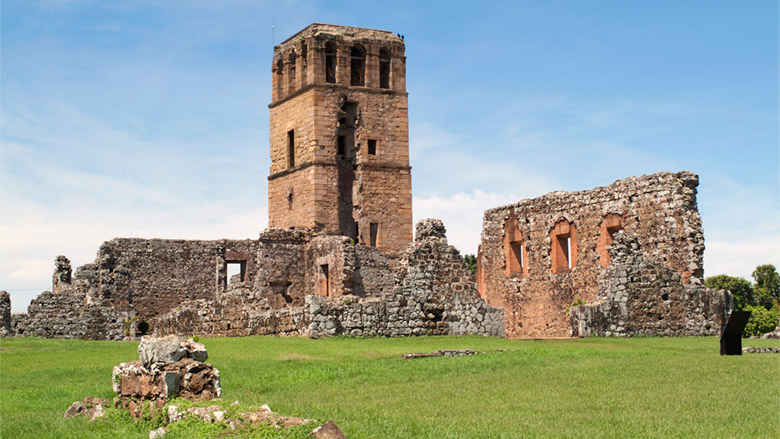
Panama Viejo Ruins & Museum – measuring nearly 100 ft. (30 meters) in height, the Cathedral is preeminent and the best-preserved of its buildings and structure you will most likely want to view and photograph. Surrounding it is an open courtyard with ruins scattered throughout.
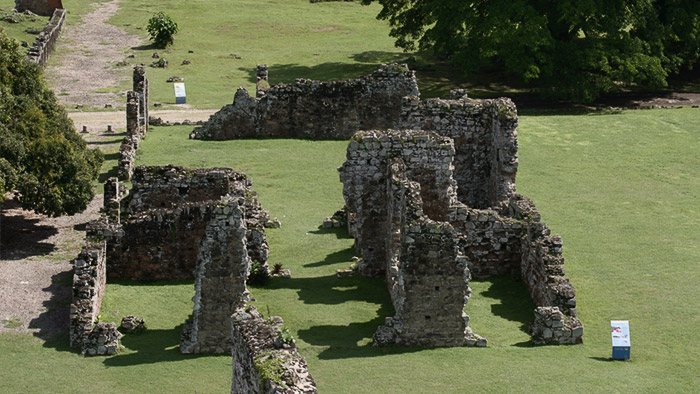
Panama Viejo Ruins & Museum – a view of the ruins from inside the Cathedral.
Declared a Historic Site in 1976, the ruins enjoy government protection. Since 1995, Panama Viejo Historical Monument Complex has been administered by the foundation Patronato Panama La Vieja. On July 5th, 2003, the UNESCO World Heritage Committee added the Panama Viejo Archaeological Site to the World Heritage list, joining Forts San Lorenzo and Portobelo.
The ruins at Panama Viejo offer a window into Panama's rich cultural history. They are scattered across 70 acres (28 hectares) and include 19 different historical sites. (You can view the sites on this map, though the site's content is limited to Spanish. Under the illustration is a list of corresponding names.)
Many of Colonial City's most meaningful buildings remain in some form. Most structures are well-preserved and display descriptive text in English and Spanish. While some signs are a bit weathered, you should have no problem reading them. Several ruins around archways and windows have been reinforced with red bricks to ensure their structural integrity. The original structures are stone and mortar, making it easy to differentiate between the two.
The grounds are clean, uncluttered, and manicured, with well-defined walking paths connecting relevant sites, making it easy to move around. The trail is predominantly flat and measures approximately 1 mile (1.6 km) in length. The open areas separating the ruins consist primarily of grass/moss. If you wish to meander through those areas, proceed slowly and with caution because there are a lot of divots and stones concealed under the grass.
Inside the Cathedral is a square steel staircase that leads up to the lookout. There are three levels and platforms, each separated by eight flights of stairs; each flight consists of 5 short steps. Large, open windows on all four sides at each level offer panoramic views of the ruins, museum, and surrounding area, including Panama City. Plaques in English and Spanish reside on the walls at each level with related information.
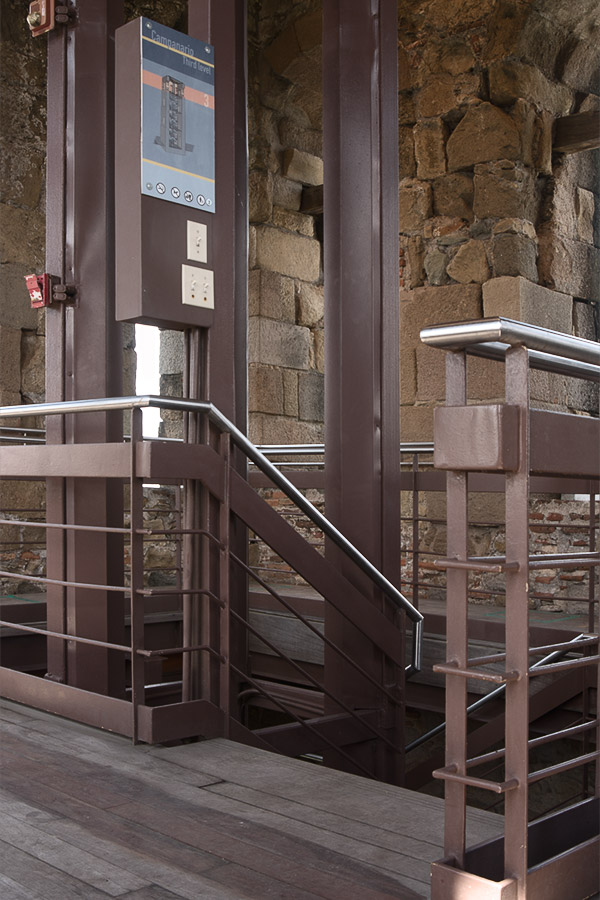
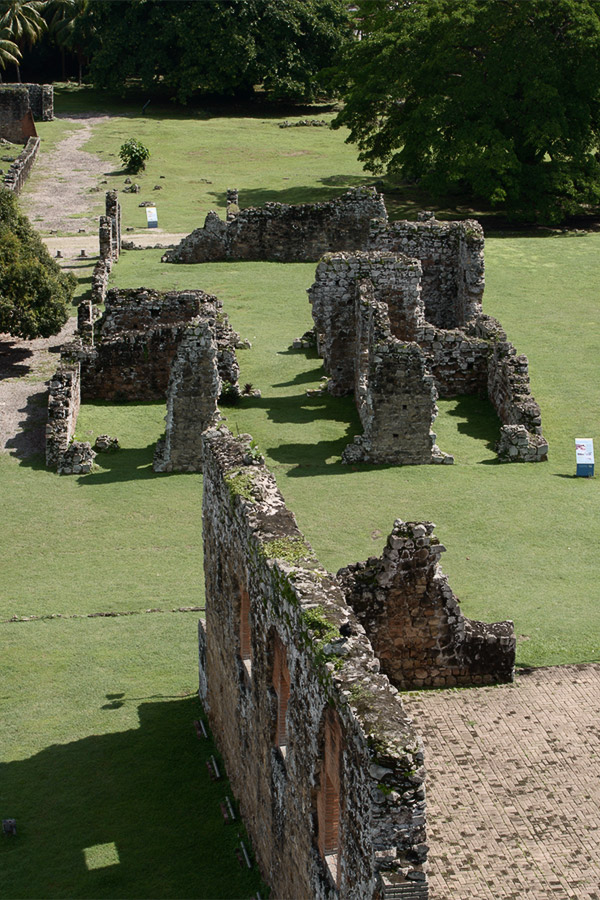
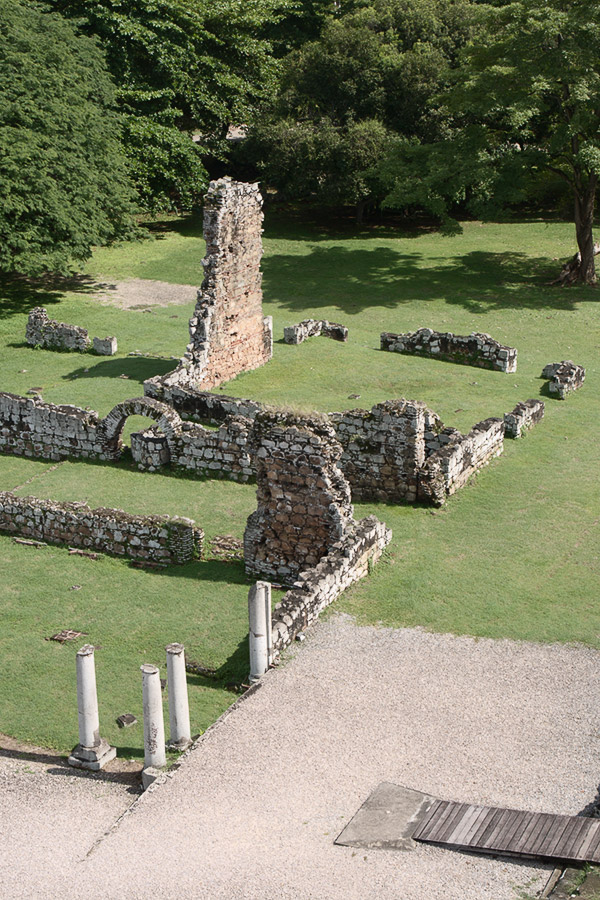
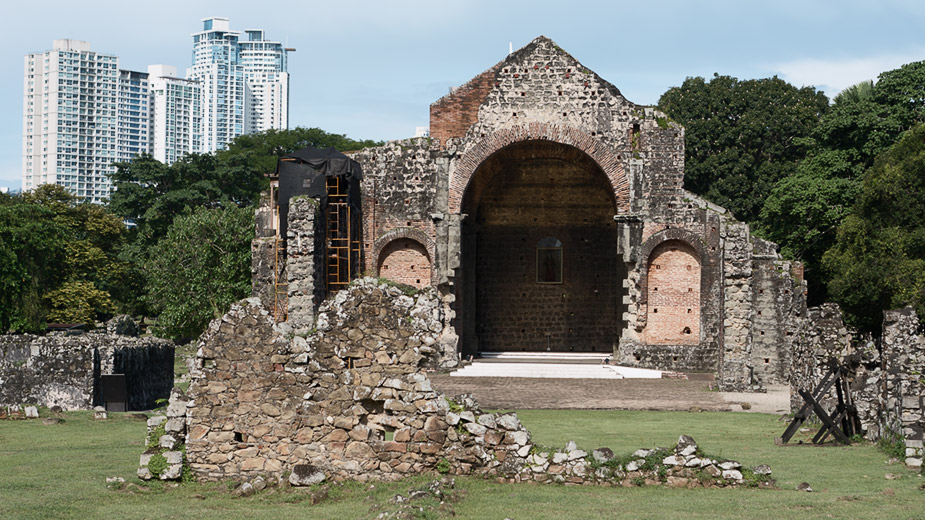
Another building worth mentioning is the "Convento de las Monjas de La Concepción," which lies midway between the entrance and the Cathedral; it's off to the left. There is a wide gravel road leading to it.
Though not as well-preserved as the Cathedral, it is the only other structure in its original form. The sections of wall and open grass areas on its perimeter are easily accessible, as you can see in the accompanying photo.
Portions are currently under repair/restoration, but access is unrestricted.
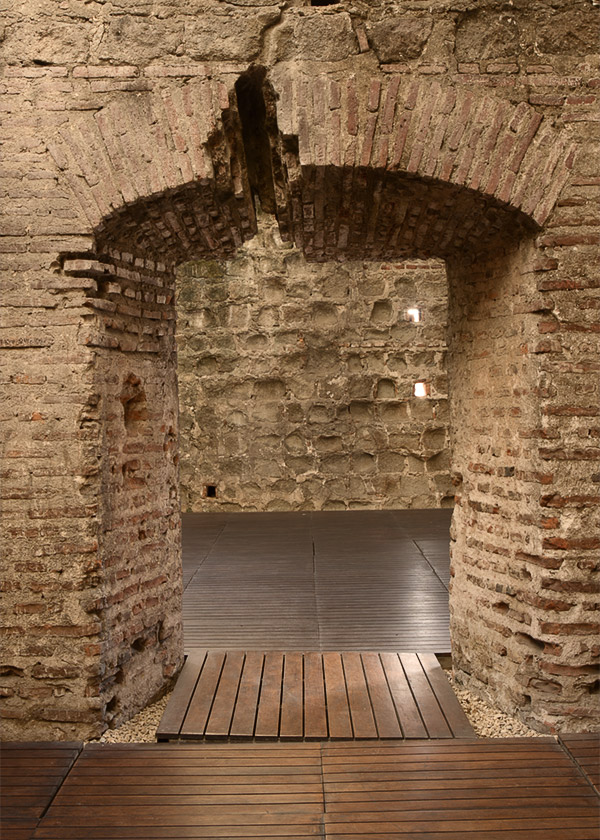
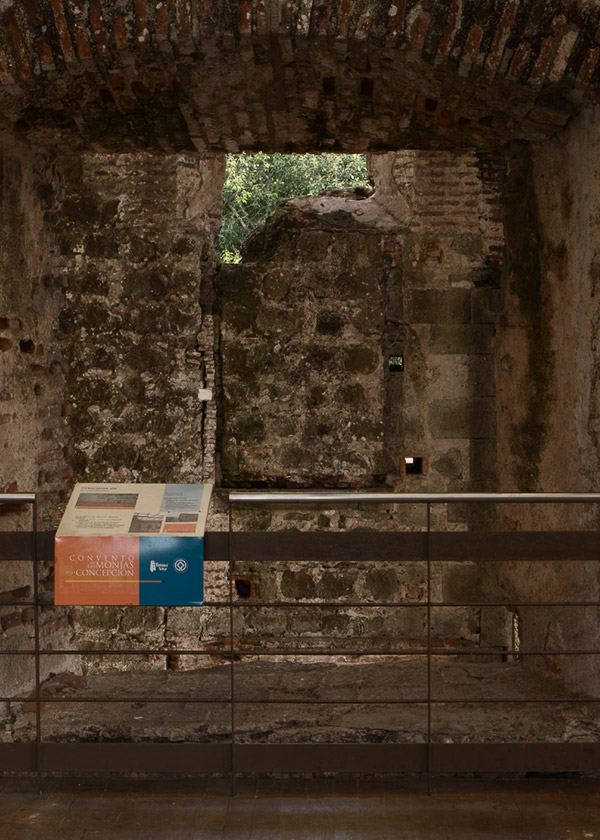
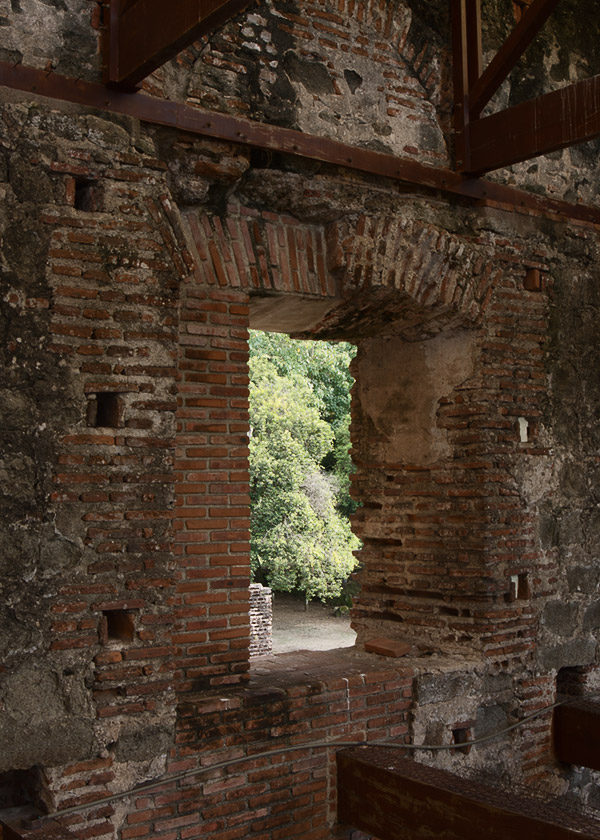
Convent "La Concepción" - There are two areas of interest inside the convent. To the right, an entrance leads you into two adjoining rooms. To the left, a staircase leads you upstairs, where you'll encounter better views and several plaques referencing the convent and its restoration. A wooden plank floorboard and an artificial roof were installed as part of the rehabilitation process.
The Panama Viejo Museum, or Museo de la Mejor Plaza, resides alongside the Cathedral and contains a wealth of intriguing information about the Colonial City and the Isthmuses' first inhabitants. It occupies the building's second floor and is spread out over several open, interconnected rooms, accessed via a semi-circular staircase inside the lobby and left of the ticket counter.
You commence at the top of the stairs with a brief overview of Panama and the Colonial City. There is a map of Panama to the right and, along the left wall, photographs, illustrations, and bilingual text calling attention to the country's strategic significance and contributions. The glass windows along the back wall offer views of the Cathedral and surrounding ruins.
After turning right, you begin with an in-depth review of the city's earliest inhabitants dating back 1500 years. Beautiful, authentic ceramic pieces, e.g., dishes, vases, pots, etc., encased in glass enclosures reside along the left wall; many are in surprisingly good shape, given their age. To the right are depictions, descriptive text, and artifacts housed in glass cabinets.
You then return to the period between 1516-1519, during the European expeditions. A detailed map highlights the many routes taken, and the accompanying text delves into the individuals associated with those campaigns. Then, during the latter half of the 16th century, Panama Viejo secured its position as a strategic point of transit. The city was founded by Spanish colonialist Pedrarias Davilá on August 15, 1519, making it the oldest Spanish settlement in the Pacific. Panama Viejo quickly became a primary hub for merchants and landowners, with a population reaching 10,000 by the mid-17th century.
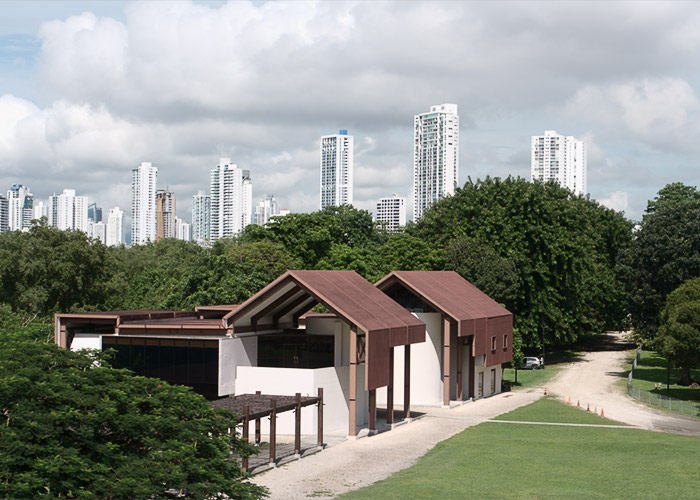
Panama Viejo Ruins & Museum – a view of the museum and Panama's skyline from inside the Cathedral. To the right, the entrance and departure road.

Panama Viejo Ruins & Museum – one of the many ceramic pots on display in the museum. They come in different sizes, shapes, and colors, and most have been exceptionally well preserved.
Moving forward, you'll enter the museum's largest room, which contains a detailed reproduction of Panama Viejo during the 17th century. Interactive buttons evenly spaced around the perimeter allow you to identify the city's primary structures. Along the right wall, several small exhibits highlight the construction techniques deployed during that period and the building materials used. Exhibitions on the left wall showcase hand-made instruments, tools, and pottery. Drawings and a timeline help chronicle events. All of the items presented are authentic; none of them are imitations.
You'll then revisit the destructive period that led to Panama Viejo's ransacking in 1671 at the hands of the famous pirate, Captain Henry Morgan. After the invasion, the city was abandoned for two centuries and never rebuilt. The city's location shifted to what is known today as Casco Antiguo; on display is a timeline of events with supporting illustrations. It's all very intriguing and represents a crucial period in Panama's development.
Towards the back and left is a closed-door exhibit filled with Colonial Era Religious Art. Adjacent to it — to the right — is another that focuses on the Colonial era home with many artifacts and trinkets.
A flight of steps takes you downstairs to a small souvenir shop. I was surprised and confused by the souvenirs they sell; only a few relate to the Colonial City. The rest are generic items — stuffed animals, folding hand fans, plates, glasses, cups, etc. — with no relation to Panama Viejo or the country of Panama. Aside from t-shirts, postcards, and a few other select items, I didn't see much to purchase.
Overall, the museum is excellent. The exhibitions are first-rate, and the vast array of authentic artifacts is intricate and well-presented.
Staff members with whom I consulted, who are familiar with cruise ship itineraries, informed me that most excursions include a tour of the museum lasting approximately one hour and a visit to the nearby Cathedral. How many other monuments you visit depends on many factors, including the length of your stay, group size, etc. At the very least, you should go to the top of the Cathedral. It offers panoramic views of the ruins and museum below and Panama City. It won't take but a few minutes. You'll be glad you did!
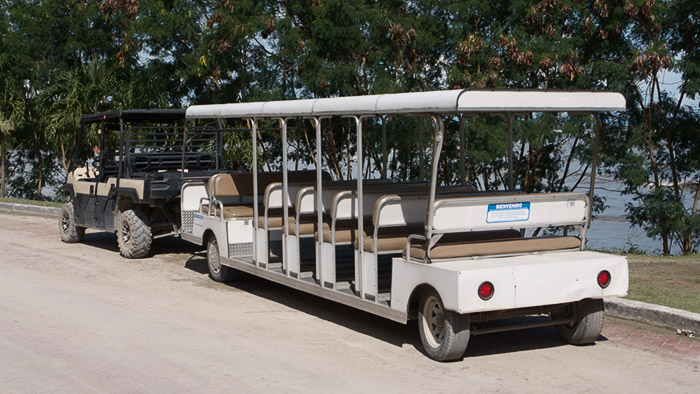
Panama Viejo Ruins & Museum – the path from the entrance to the Cathedral consists of a flat, gravel/pebble road. The museum provides a complimentary shuttle service in what resembles an open golf cart that accommodates 16-20 people. The seating is spacious and comfortable, with padded seats. It is a short, pleasant ride that lasts just a few minutes.
For your excursion to Panama Viejo, I recommend a wide-angle zoom (15-60mm) and medium telephoto (70-200mm), though the wide-angle will prove more useful.
To photograph the Cathedral from the courtyard or when inside, you will need a 15-25mm. The staircase is spacious, but the area is cramped. A 25-60mm lens should be all you need when shooting the remaining historical sites outside at ground level. The ruins are scattered, with ample space between them.
A 70-200mm telephoto lens will be helpful when taking pictures from within the Cathedral, looking out the many windows, and isolating select subjects. The panoramic views of the surrounding ruins, museum, and city from the two upper platforms are terrific, so make sure you go to the top!
There is no need for a tripod. The terrain around the Cathedral is flat and solid despite being comprised primarily of grass.
Note: picture taking inside the museum is permitted without flash. With that said, I saw people snapping pictures with their cell phones using its built-in flash. You'll likely only have a problem if you draw too much attention to yourself. Most exhibits are well-lit, particularly those housing artifacts and ceramic pieces. Some of the rooms are dim but photographable.